The top 12 APM tools for 2022
Posted Aug 4, 2022 | 8 min. (1493 words)Application performance monitoring (APM) tools give you insight into the server-side performance of your website or application. From increased uptime and improved user experiences to reduced risks and decreased expenses, it provides an array of business benefits that help you move faster than competitors and deliver more value to users.
So it comes as no surprise that, according to analysis by Emergen Research, the global market for application performance monitoring (APM) tools is expected to reach $15B in 2028, an impressive uptick from 2020’s $6.54B.
With so many APM tools on the market, choosing the right solution can be tricky. Every organization is different, so APM software that works for one company might not meet another’s needs. As application performance is monitored on the server, you’ll also need to choose a platform that supports the backend language your application is written in.
However, finding the right APM tool is worthwhile to increase your organization’s effectiveness while ensuring the applications and services you deliver exceed customer expectations.
With that in mind, let’s take a look at the 12 APM tools that are worth checking out.
1. Raygun
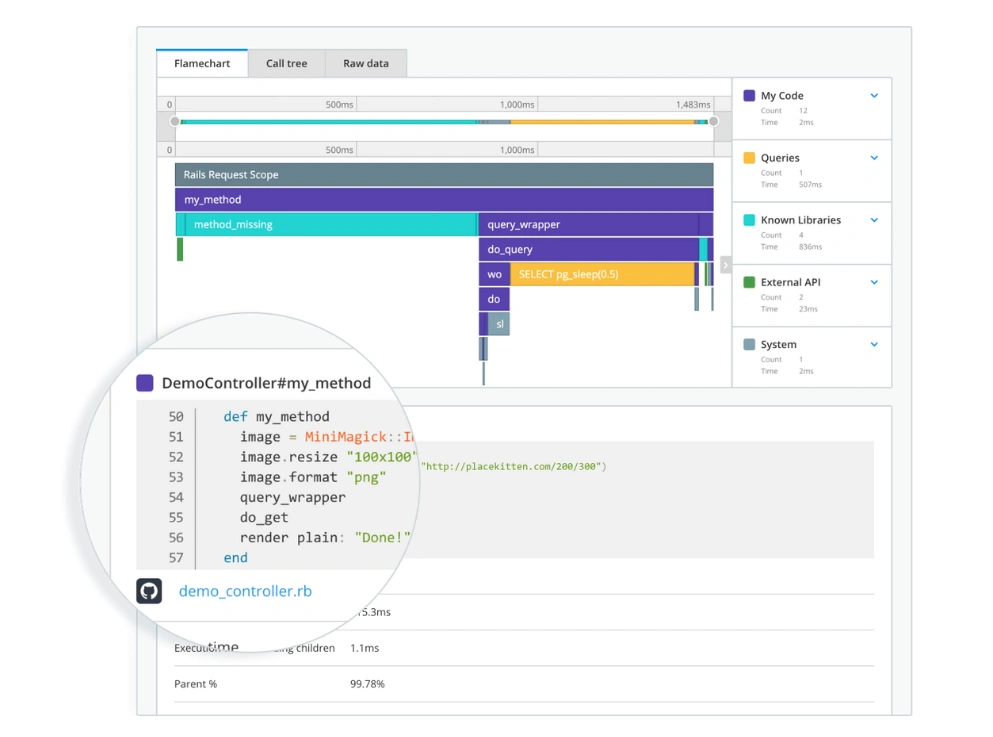
Application Performance Monitoring (APM) from Raygun offers a comprehensive SaaS-based solution that lets you monitor the server-side performance of your applications from one central location.
Crash Reporting, Real User Monitoring, and APM software work together from one integrated dashboard to provide real-time data about the user experience and application performance.
Simply put, this means you can rapidly determine what needs to be done to speed things up. Use Raygun APM to see issues and determine whether the cause lays in your code, function, database, or API call. Then take immediate steps to remedy it.
Raygun APM is different from other solutions as it gives technical teams greater context and diagnostic visibility into their biggest performance questions. The flamechart shows every trace, and the issue creation engine allows developers to fix what’s impacting customers the most. Pricing is also much friendlier than some other tools on the market as it is charged per trace.
Application Performance Monitoring by Raygun is available for the .NET, .NET Core, Ruby, and Node.js server environments and the Azure App Service managed web application platform. In addition, Raygun APM integrates with PagerDuty, Jira, GitHub, Slack, GitLab, Bitbucket, and many other popular developer tools.
2. Scout
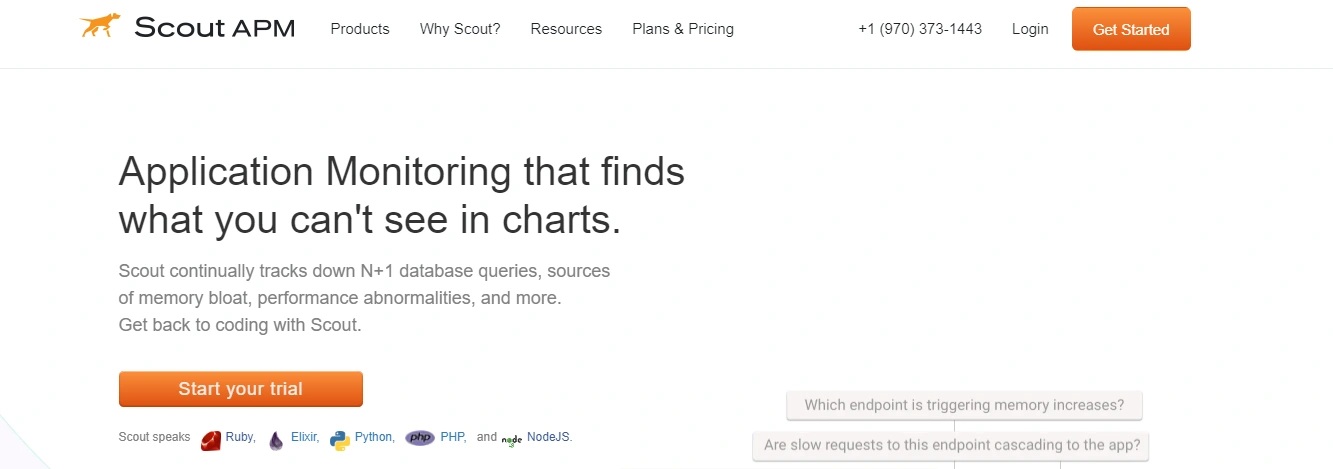
Scout is an APM-only solution that provides insight into the performance of applications built in Ruby, Elixir, Python, PHP, and Node.js. It lets you identify commonalities across slow requests, tie bottlenecks to the source code, and analyze overall backend performance.
Similar to Raygun, Scout also offers integrations with Slack, GitHub, PagerDuty, and other tools to better support your workflow. While Scout APM makes it easy to identify slow database queries, N+1 database queries, and memory bloat, you will need another tool to monitor your frontend performance.
3. AppDynamics
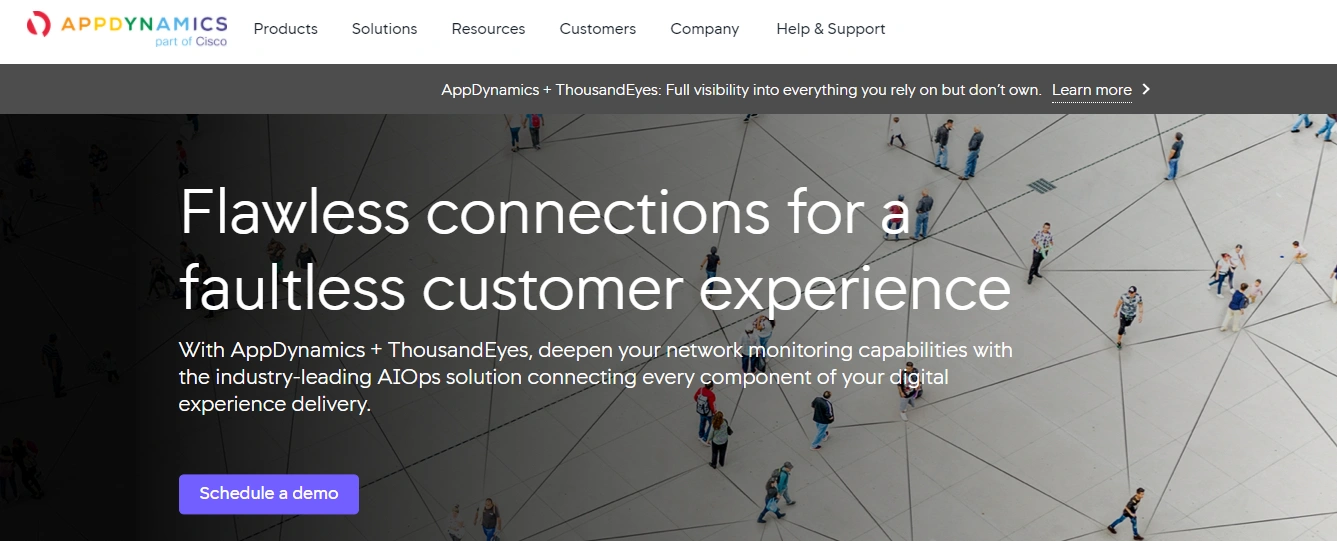
Cisco’s AppDynamics is a powerful observability platform that includes an APM solution to help organizations ensure their apps are working efficiently. The platform supports a number of languages, including Java, .NET, PHP, Node.js, C/C++, Python, and Go.
While this solution is powerful and can help you improve the user experience, it can take a while to implement fully. Employees may also need to be trained before they’re able to use it effectively. What’s more, because the platform was designed for the enterprise, it may be priced out of reach for many smaller, independent developers.
4. Stackify Retrace
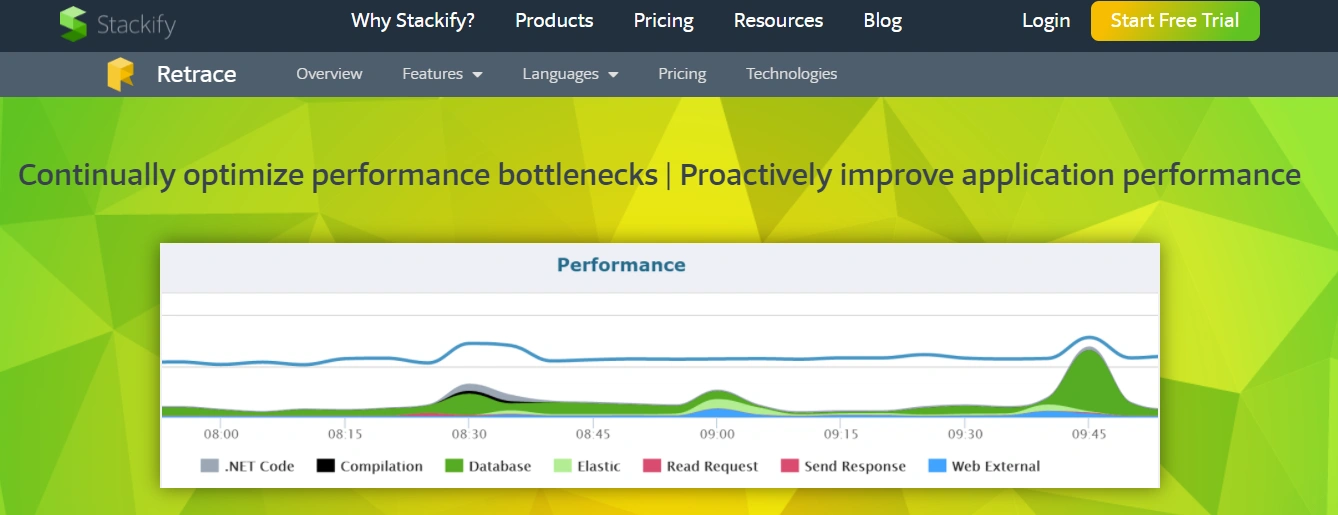
Stackify Retrace is an APM tool that helps developers detect server-side bugs during development, QA, and production. It also monitors deployments to make sure apps are performing as intended.
Like many other application performance monitoring platforms, it gives you access to application logs, code-level traces, performance scores, and more. Stackify Retrace supports PHP, Ruby, Node.js, Python, Java, and .NET applications.
5. Dynatrace
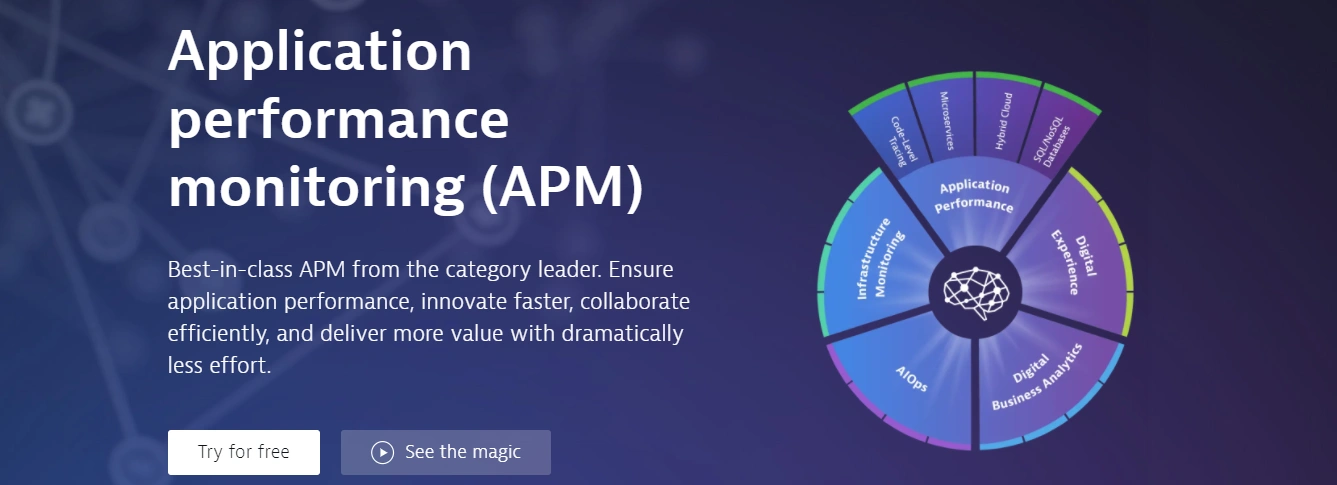
Dynatrace provides real-time insight into your entire application stack and enables you to optimize the user experience. The APM solution illustrates application topology and changes in real-time, leveraging artificial intelligence to detect performance problems and reduce MTTR (Mean Time to Recovery).
It lets you monitor Java, .NET, .Net Core, Node.js, and PHP applications. Though Dynatrace is certainly a sophisticated APM solution, their pricing model can make it a very expensive solution for anyone but enterprise customers.
6. Loupe
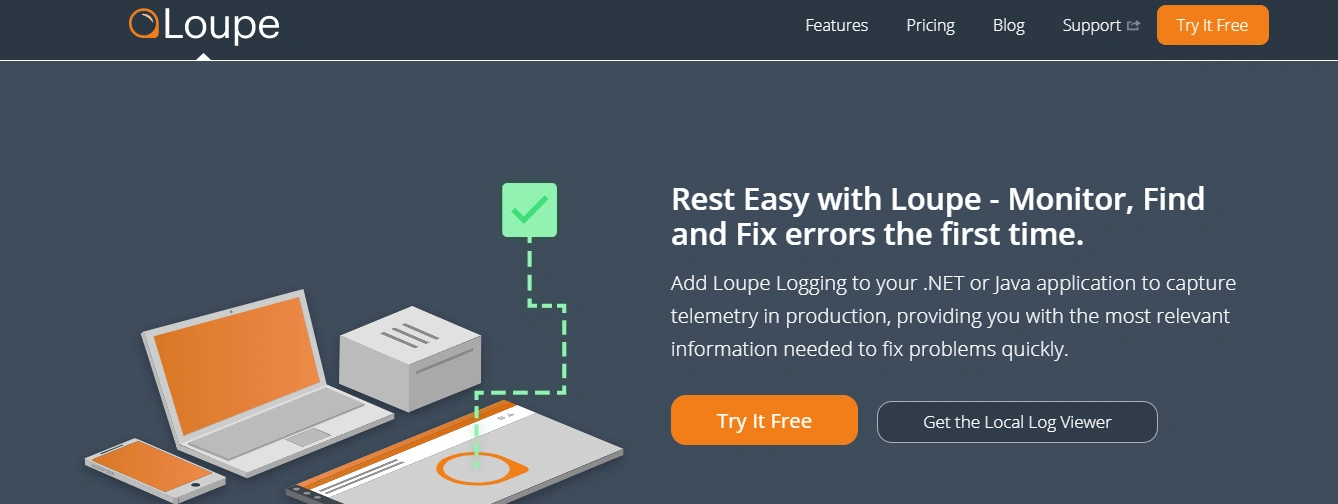
Loupe is a lightweight APM tool that can be hosted in your own data center or delivered via the cloud as a SaaS solution. The platform can be integrated with several tools in your tech stack and captures telemetry to provide you with the most relevant information needed to fix problems quickly.
Keep in mind that Loupe only supports .NET and Java applications. Depending on your budget, you may find that Loupe is a bit pricey for your needs too. But the app does offer a free trial, so you can get an estimate of what your needs are before committing to a plan.
7. Nastel’s Java
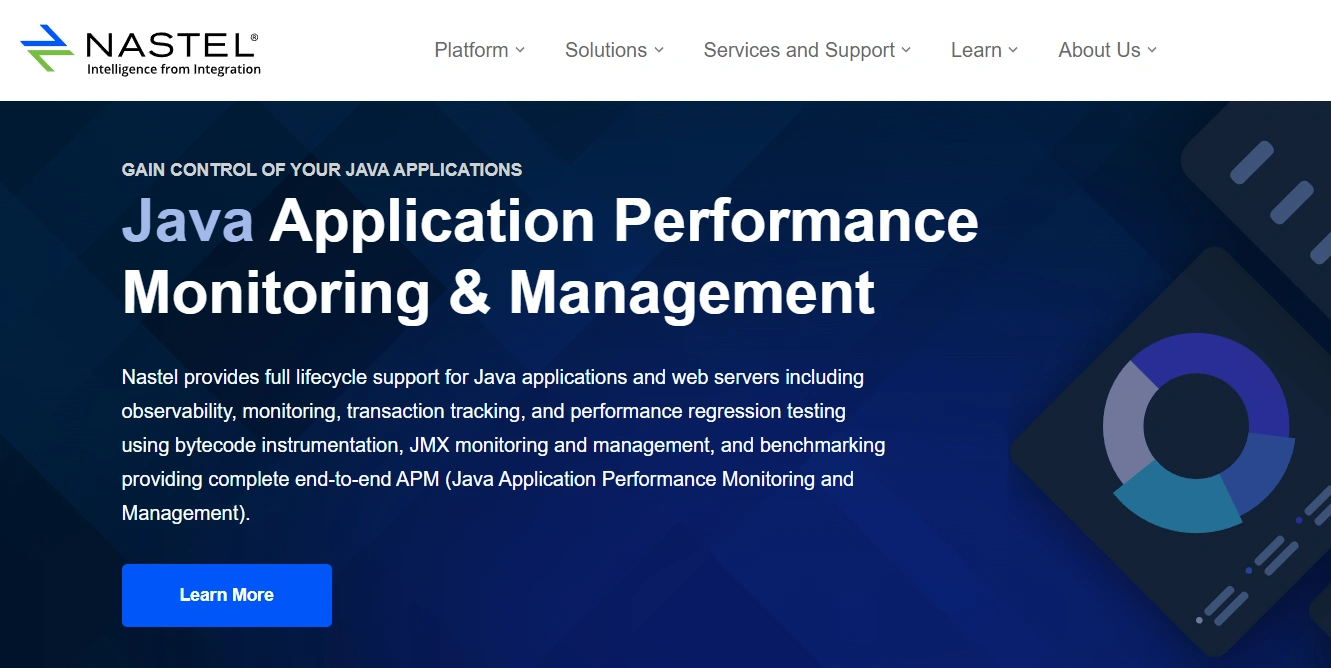
Nastel’s Java APM is a real-time, end-to-end application performance monitoring solution that works for applications built on Java across distributed system platforms, middleware, mainframes, and mobile apps. Teams that use Nastel are able to spend less time proactively monitoring their applications thanks to a real-time alerting system that informs employees of situations that require action.
While the platform provides several benefits, companies may need to spend a good deal of time training their users. You’ll probably need to invest several hours in properly configuring the tool before your team can become fully productive with it.
8. Instrumental
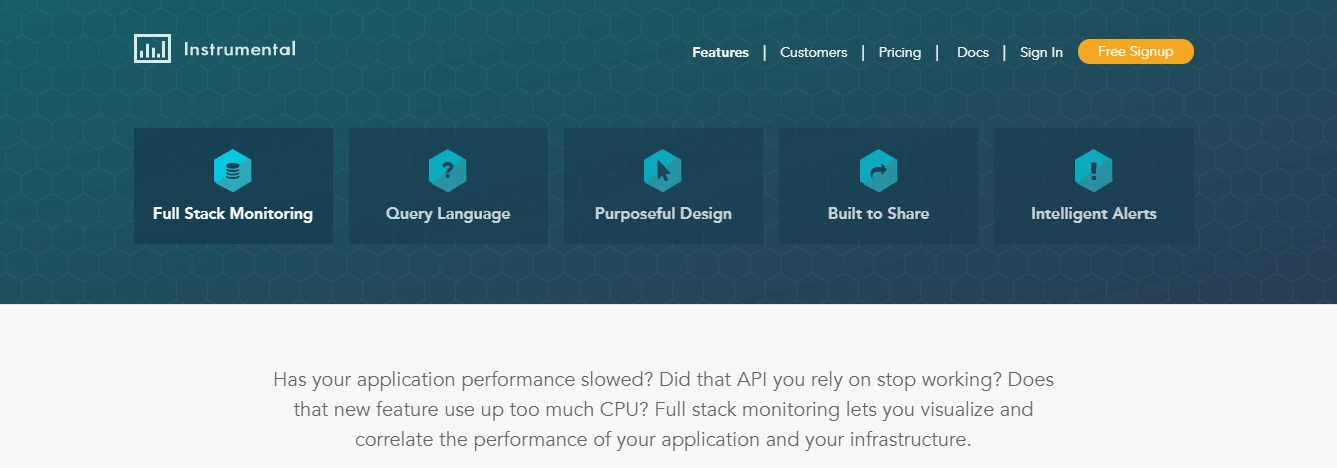
Instrumental is an APM and infrastructure monitoring solution that supports applications written in .NET, Java, Ruby, Python, MySQL, PHP, and Node.js. New metrics can be tracked by adding a new line of code. The low-cost tool offers a free trial that enables you to monitor up to 500 metrics for three-hour periods; advanced monitoring capabilities require a subscription.
While Instrumental provides a wealth of actionable insights, you do lose some granularity as you assess longer periods of history.
9. New Relic APM

New Relic APM provides a complete view of your tech stack and application health. The solution supports several languages, including C, .NET, Java, Ruby, Python, Node.js, Go, and PHP. New Relic APM boasts flexible pricing and a free tier if you’re looking to try out the functionality.
While you do get a lot of features with New Relic APM, they often don’t provide enough information to diagnose and resolve performance issues. A lot of the metrics and visualizations only scratch the surface so may be useful for business users rather than technical teams.
10. Datadog

Datadog enables you to monitor, troubleshoot, and optimize application performance of cloud-based applications all the way down to a single line of code or unique customer request. The platform provides a wealth of data in built-in dashboards that are visually appealing, including a flame chart for trace views.
However, for unique requests, it can be difficult for the average user to create customized dashboards from scratch. New user onboarding may take a while for those who aren’t as advanced as some of their peers. Datadog APM comes with support for Java, .NET, PHP, Node.js, PHP, Python, Go, and C++ applications.
11. AppSignal

AppSignal is an APM solution that provides error tracking, host monitoring, and metrics for applications with support for Elixir, Ruby, and Node.js. In addition to the APM functionality, you can also use it to monitor frontend JavaScript applications. All plans have a 30-day free trial and come with unlimited hosts, teams, integrations, and apps so you can get an estimate of your monthly usage before making a committment.
While AppSignal is an affordable solution, with a free offer for selected open source projects, its UI is less user-friendly and requires a deeper technical knowledge than most APM tools on this list.
12. Skylight
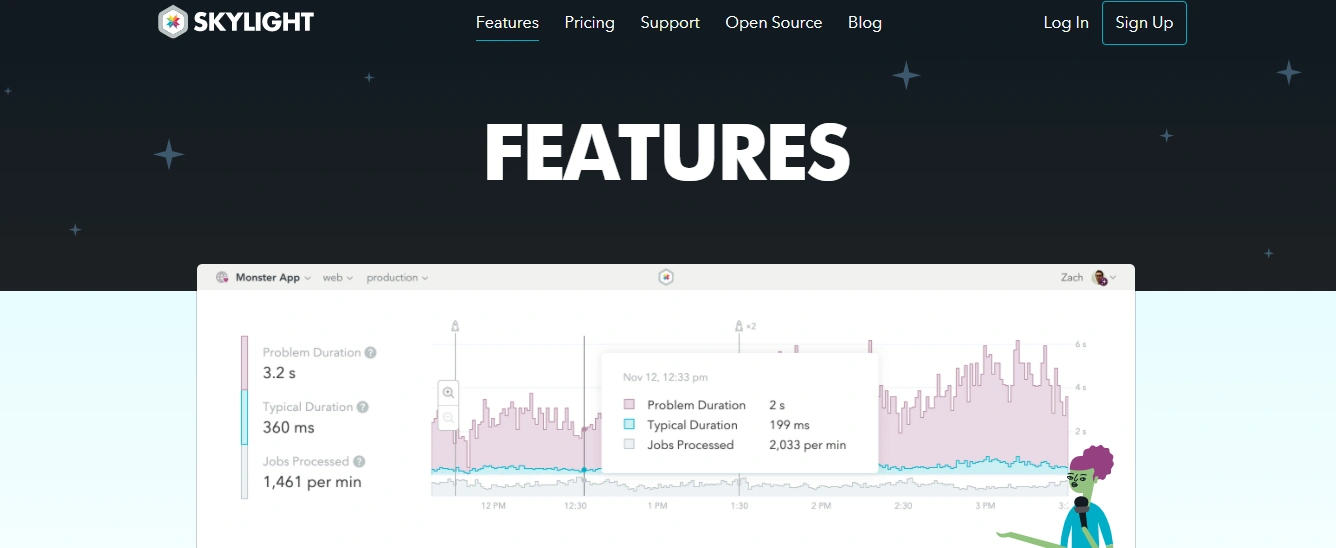
Skylight is an APM tool for Ruby on Rails applications, built with the Ruby community in mind. It sorts endpoints by their “agony” metric — a combination of popularity and response time, to show where the biggest performance gains can be made.
While Skylight boasts beautiful vizualisations, deployment tracking, and usage-based pricing, the tool only supports Ruby applications. If you require support for other languages, you will have to look elsewhere.
Which APM tool will work best for you?
As you can see, there’s no shortage of APM tools on the market. While many of these tools have similar functionality, it’s worth analyzing their differences and conducting an APM tool comparison to determine which solution makes the most sense for your specific situation.
If you’re looking to deliver more value to your customers and build stronger applications, you need to add an APM solution to your tool stack.
Raygun APM is currently available for .NET, .NET Core, Ruby, Node.js, and Azure App Service. You can plug it in and try it out in minutes, to start exploring all the diagnostic information you need to solve your biggest performance issues. Sign up for a free 14-day trial here.


